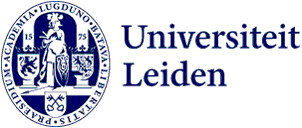
No experiments but equations: how Daoyi Wang uses math to understand the world
How do you study the growth of microorganisms, the spread of epidemic diseases or the healing of wounds, without actually performing experiments? Daoyi Wang, PhD candidate at the Mathematical Institute, worked on a specific mathematical model that can describe the growth of microorganisms and many other natural phenomena. Wang successfully defended his PhD on 28 May.
Most to-be-solved problems start with observing something in nature. Scientists can take two different routes to understand what they observed. Some do experiments, get the results and try to find a rule. That’s not always the most practical choice. Instead of experiments, you can go theoretical. This is the route mathematician Daoyi Wang followed. ‘We write down equations that model what we observe and then see what we can understand from them.’
The problems Wang focused on during his PhD research concern the parabolic Anderson model (PAM), which is part of a bigger topic called reaction-diffusion equations. Those equations describe movement behaviour of anything with a diffusion and reaction component. Wang explains this using the example of a microbe colony.
Calculating with microbes
Microbes multiply, divide and grow, and they move around. That is diffusion. The reaction part in the PAM describes so-called sources and sinks. Sources in this example could correspond to places with lots of nutrients. Multiplication of microbes happens faster there. The sinks could be places where there’s less food, or something that hinders their growth, causing the population to die in that area.
‘My model can predict what happens in these situations without the need to actually getting a colony of microbes and looking at it. You can ask questions like how many microbes there are, what their growth rate is, and what the highest concentration of microbes is.’
‘Microbes follow a random path, and that’s what we’re trying to better capture.’
Following a random path
Wang’s supervisor Frank Den Hollander has been working on these problems for 25 years already. In the previous work, the researchers assumed the particles (for example microbes) moved on a grid, with evenly spaced steps and right angles. Wang’s new model assumes more random movements. That wasn’t done before. In nature, random patterns are quite common. Wang: ‘Microbes don’t move following right angles everywhere, as was assumed in previous work. They follow a random path, and that’s what we’re trying to better capture.’
Unsolvable equations
As a mathematician, how do you study problems like this? Wang: ‘Basically, you’re looking at a mathematical formula, wondering what you can prove about it. Can we find out something that’s always true about these equations? What conditions do we need for it to hold?’
‘Once you solve an equation you should know everything about it’
Wang explains how he builds the equations he studied. ‘We start with an equation for diffusion. We build on this with different components from our observation. For example, things move from high to low concentration. There is an equation for that as well, so I add that to my formula. And so on.’ The model Wang created works even for more complex situations. ‘For example, with more sources or extremer sinks, this still falls within the same framework.’
Equations like this are not simple, Wang admits, you cannot always solve them. ‘Once you solve an equation you should know everything about it. That’s not always possible. Exactly that is the challenge of mathematical research.’
The odd one out
According to Wang, mathematics is just the odd one out of the sciences. People find it hard to understand: how can you do research without experiments? ‘Mathematics is quite powerful, I think. Whenever a new problem is big enough, people will invent new mathematics for it. Mathematics somehow allows people to solve problems.’
Daoyi Wang defended his doctoral thesis titled ‘The parabolic Anderson model on Galton-Watson trees’
